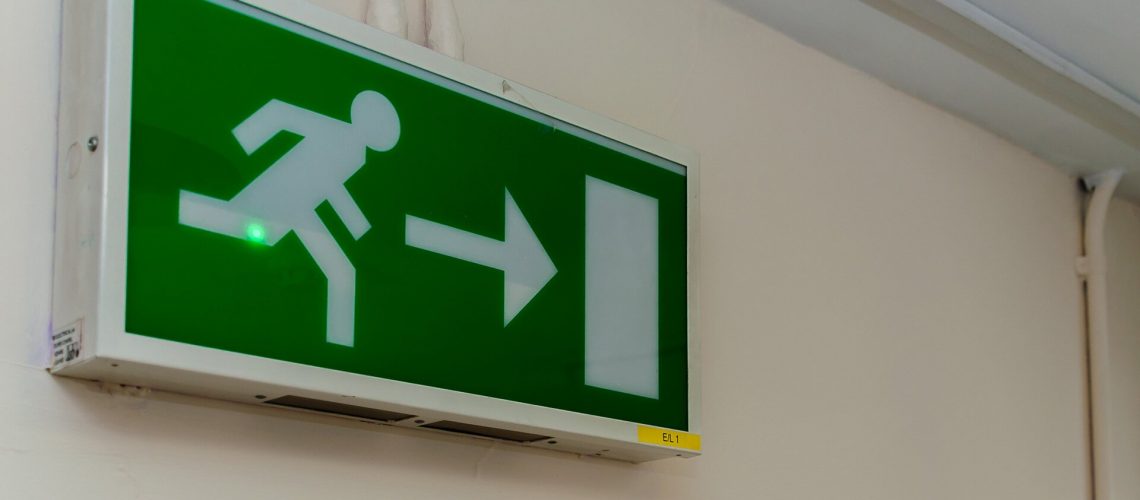Emergency lighting is essential when the mains power fails. It ensures that a certain level of lighting is available to guide people out of the building in the event of an emergency.
In this article, we discuss the different types of emergency lighting and how to choose the best emergency lighting solution for your building.

Maintained and Non-Maintained Lights
Emergency lighting comes under two categories, either maintained or non-maintained. These categories determine when an emergency light will be turned on.
It is important to consider the benefits of both options when deciding which to choose for a building.
A maintained emergency light gives you more flexibility. They can be programmed to come on before and during a power cut. Maintained emergency lights are used to avoid total darkness and are typically used in the like of cinemas or theatres.
Unmaintained emergency lights are not as flexible. They only become active when a power cut is detected. The only power source of an unmaintained light is its battery which is charged by the mains.
However, unmaintained emergency lights are more cost-effective and environmentally friendly so tend to be the most popular option.
They do, however, require a constant flow of electricity to keep charged. This function must be weighed against the safety of the building occupants. Unmaintained lights will only show the emergency exits in an emergency and come on to show occupants of the building where the exits are.
LED and Standard Bulkheads
The other major difference amongst emergency lights is how they operate. Traditional standard bulkheads operate like a normal lightbulb, while LED lights use more modern technology.
Many emergency lights are still standard bulkheads. Although the technology is outdated, they still play an effective role in making buildings safe.
The age of their technology makes standard bulkheads very cheap. Moreover, they are easy to maintain. Regular testing and cleaning will suffice to keep these lights running at their best.
Standard bulkheads are far from perfect though. They are inefficient and therefore can be expensive to run. They can also contain harmful chemicals and are hard to dispose of environmentally.
They also have bulbs that must be replaced periodically. To avoid emergency light failure as soon as a bulb appears to be weakening it should be replaced immediately.
LEDs are a more environmentally conscious solution for emergency lighting needs. They are highly efficient and do not contain toxic chemicals such as mercury.
You don’t have to worry about charging the bulbs in LED emergency lights either. Most LED lights will last between 10,000 and 50,000 hours.
The benefits of LED lighting saves building managers thousands of pounds a year in electricity bills. They also have much longer lifespans and need to be replaced less often.
LEDs also provide instantaneous light. A normal bulb will take a while to warm up, but an LED light will instantly reach its maximum brightness. This characteristic is important in an emergency as people in danger will not have to wait for emergency lighting to take effect.
LED technology is becoming increasingly common. They are much easier to source than standard bulkheads. They have also stopped being drastically more expensive. A typical emergency exit light costs around £30-50 depending on the quality and brightness of the emergency light.
What emergency lighting should my building get?
There is no single solution to choosing emergency lighting that is 100% correct. Many factors must be weighed up.
Of course, from a safety and environmental perspective, a maintained LED emergency light is the best option for most buildings. They are slightly more expensive at startup and are on at all times so use is using power.
Replacing standard bulkheads with LEDs is not possible for all buildings. Therefore, the solution that provides the most safety for the building’s occupants should be your priority when deciding which emergency lighting to install.

